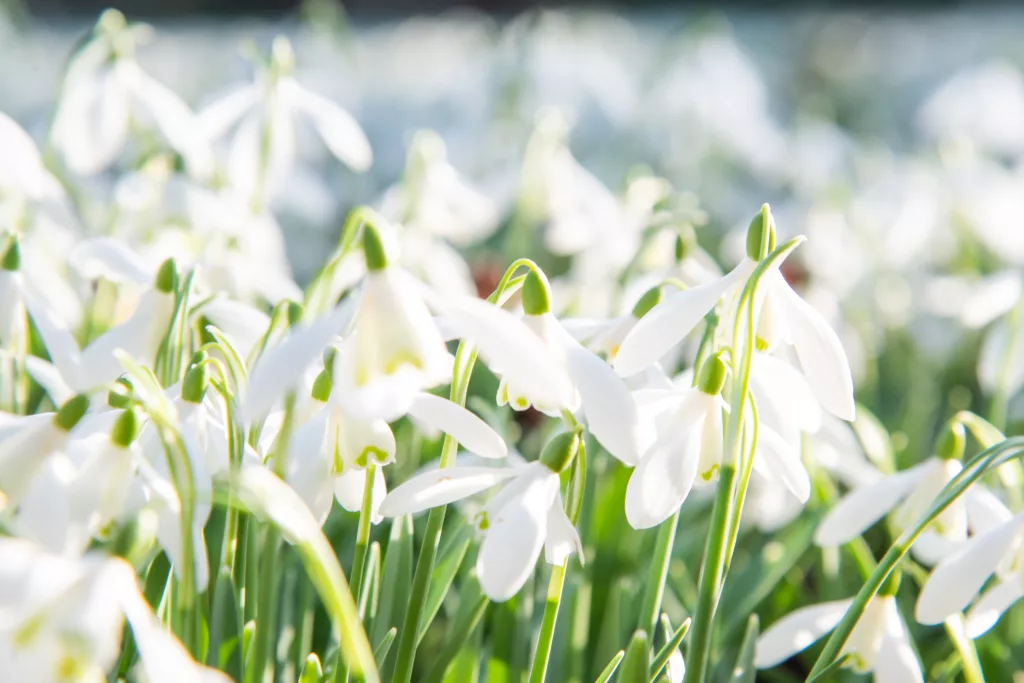Banish post-Christmas blues with a magnificent snowdrop walk in Norfolk. At Walsingham Abbey magic carpets of white burst from the cold ground dazzling the winter gloom. Clouds of delicate naturalised snowdrops spring up in their thousands, a signal that winter’s darkest hours have passed. Mingled with aconites they brighten the 18 acres of woodland and billow in drifts along the banks of the River Stiffkey. The grounds around Walsingham’s historic house are famous for the atmospheric ruins of the Mediaeval Priory of our Lady of Walsingham, as well as these miraculous swathes of snowdrops. Their graceful multitudes promise that days are turning again towards the sun.
In Walsingham the green sheaths of snowdrops often start appearing in early January, and flowers begin to open at the end of the month. By mid-February the snowdrops are in full bloom, a feast for the eyes until early March when the flowers fade and dancing daffodils take their place. Commonly found at former abbeys and priories as well as in country churchyards, the origin of Walsingham’s snowdrops is obscure. Walsingham has been a special place for religious pilgrims since the 11th century, and as these delightful blooms are the first flowers of spring, reappearing when it seems still to be the depths of winter, they’ve become symbolic of new life, rebirth and of Christian resurrection. Thanks to the snowdrops’ stunning natural spectacle this most welcoming of villages has become an uplifting springtime destination for visitors of all religions and none.



